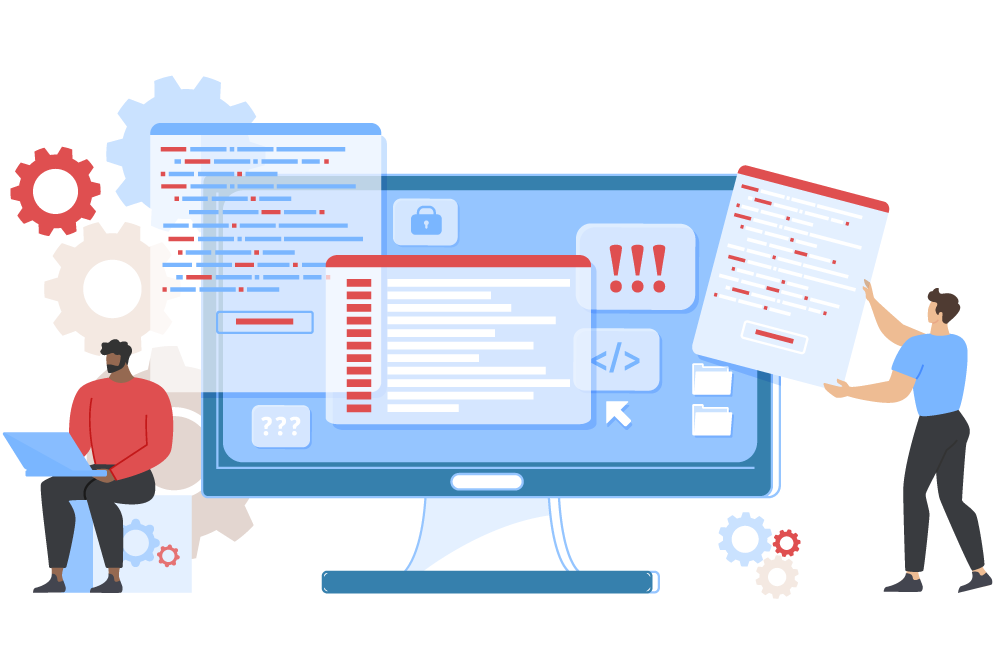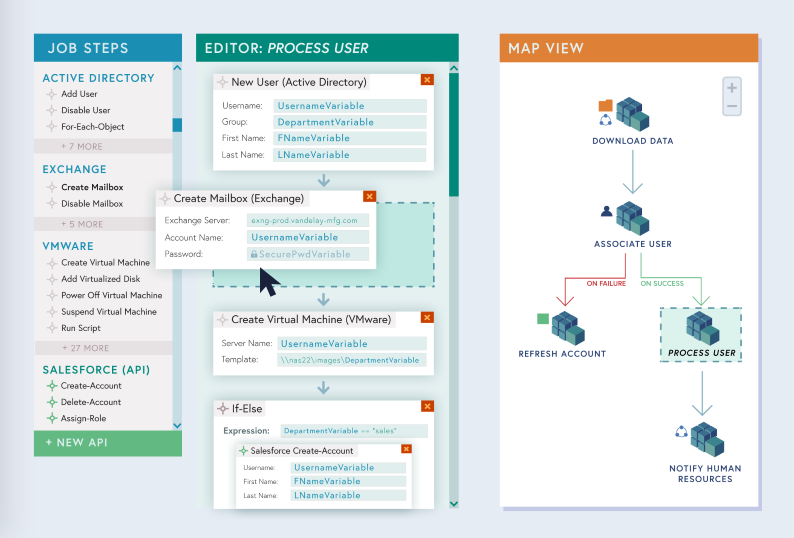Top Info For Choosing Low-code platforms for application development
Top Info For Choosing Low-code platforms for application development
Blog Article
Benefits Of Low-Code Development To Non-Developers In Terms Of Accessibility
Low-code development of applications significantly increases accessibility for non-developers. They are often called "citizen developers," because of a variety of key factors. Intuitive Visual Interfaces:
Drag-and -Drop Builders. Low-code platforms have drag-and -drop interfaces. This provides non-programmers with the possibility of building applications in a visual manner, without writing code. This makes the development process easier for those with no technical background.
WYSIWYG Editors WYSIWYG Editors "What You See Is What You Get" editors assist users in creating workflows or interfaces that look like the final products, making them more understandable.
Simple Workflow and Logic Design:
Visual Workflow Modeling: Users can develop business processes and apply logic through visual flowcharts and models, which are easier to understand than traditional coding methods.
Pre-built Logic Components: Low-code platforms typically have pre-built logic elements (e.g. statements that are conditional loops) which can be easily configured, reducing the requirement for complicated coding.
Reusable Components and Templates
Library of Templates pre-built: Many platforms that offer low-code come with templates available for the most common applications. This lets developers begin their journey quickly and effortlessly, while non-developers can customize the templates to their own preferences. the need.
Reusable Widgets and Modules Users can use reusable widgets and modules to streamline the process of creating them and reducing the need for technical expertise.
Tutorials and guide development:
Step-by-Step guides: Platforms provide tutorials and online assistance for non-developers building applications.
Interactive Tutorials Interactive tutorials and hands-on ones let users learn by doing. They can build confidence making use of the platform.
Integration of existing tools:
Seamless integration Low-code platforms have been created to be able to seamlessly integrate with existing tools and systems for business (e.g. ERP, CRM) making it possible for non-developers to develop applications that fit into their workflows.
APIs/Connectors: The built-in APIs/connectors allow non-developers to connect their apps to other services.
Collaboration Features:
Team Collaboration: Features, such as real-time collaboration and shared workspaces, help professionals and non-developers to collaborate effectively.
Role Based Access Control: You can assign non-developers specific roles that have the right access level so that they can be part of the development process without compromise on security or function.
Automated Debugging, Debugging, and Testing
Built-In Testing Tools: Low-code platforms usually have built-in testing tools and debugging tools to automate these procedures, making it simpler for non-developers to ensure the application is working properly.
Error Highlighting: When problems arise the platform highlights any mistakes and suggests solutions by guiding non-developers through troubleshooting steps.
In general, low-code development can make development more accessible to everyone. This is a significant advantage for non-developers. Low-code platforms are easy to use, visual tools, guided experiences and enable business users actively take part in the creation, maintaining and updating applications. Follow the top Low-code Platform for application development recommendations for website info including cross platform mobile app development, driver jdbc, azure sql databases, app platforms, mobile development platforms, rad application development, app development platform, develop mobile application, rad development, app platforms and more.
Benefits Of Low Code Application Development For Governance And Security
Low-code applications offer a number of advantages when it comes to governance and security, which is essential to ensure that applications are compliant, secure, and well-managed throughout their entire life cycle. These are the main advantages.
Unified Management console: This low-code platform typically provides a central dashboard that administrators can use to control and monitor all applications, ensuring consistency governance across the entire organization.
Role-Based Access Control (RBAC): These platforms typically include strong access control based on role that allows administrators to establish and enforce access rules. This ensures that only users who are authorized can access or modify specific areas of the application.
Conformity and Regulatory Conformity:
Built-in Compliance Features: Many low-code applications are designed to conform to the industry norms and regulations (e.g. GDPR, HIPAA). These platforms have frameworks and tools to make sure that the application is in line with these requirements.
Audit trails and logs Audit trails that are comprehensive and logging are usually connected. This lets organizations track and monitor changes and access and also ensure the compliance of internal policies and external ones.
Additional Security Measures
Data Encryption. Low-code platforms provide encryption that is built into information both in the state of rest and when it is transmitted to ensure that sensitive data remains protected.
Security Certifications: A lot of low-code service providers have security certificates (e.g., ISO 27001, SOC 2) that show that they adhere to the highest security standards, providing extra security for users.
Automated updates for security:
Regular Patching and Updates: Lowcode platforms usually handle regular updates to security. These patches guard applications against the latest threat without requiring developer intervention.
Security Monitoring Tools: These tools send alerts in real time and insights into security concerns that might be present.
Data Governance
Data Access Policy: These platforms help organizations define and enforce policies for access to data, while making sure that only authorized individuals have access to data and that they are using it in a proper manner.
Data Masking and anonymization: Built-in tools for data masking and anonymization can help safeguard sensitive information, especially in the testing and development environment.
Consistent application lifecycle management:
Development and deployment Pipelines Low-code platforms provide integrated development and deployment pipelines which contain security tests. They make sure security is maintained through the entire life cycle of an application.
Version Control: An integrated version control system helps to manage changes, allowing any modifications made to an application to be monitored. If necessary the changes can be reversed and the integrity of the application maintained.
User authentication authorization
Single Sign On (SSO) Supporting single sign-on and other advanced authentication techniques simplify management of users while increasing security.
Multi-Factor Authentication Most platforms have built-in support of multi-factor authentication. This adds an additional layer of security to applications.
Policy Enforcement and Compliance:
Low-code platforms include templates for policies predefined and can aid organizations in implementing security and governance guidelines.
Tools for Monitoring Compliance: These tools provide continuous monitoring, reports and analysis of compliance status. It's easier to spot potential issues and take appropriate action.
Integrating with Existing Security Infrastructure
Seamless Integration: Platforms using low-code technology are designed to seamlessly integrate with tools and infrastructure like SIEM (Security Information and Event Management solutions) and firewalls.
API Security: Built in API security features safeguard the data of API users, ensure integrity of applications and ensure safe integrations.
Best Practices and Training
Guided Best Practices : A lot of platforms offer guidelines and best practices that can help non-developers adhere with security standards.
Some lowcode providers provide tools and security education for users to learn how to create and maintain a secure application.
Overall, the governance and security advantages assure that applications are constructed and operated in a secure manner while remaining in compliance with the regulations, and under control. These platforms include the tools and frameworks needed to supervise and control development of applications, as well as secure sensitive data, while ensuring legal compliance and enforcing the policies. Read the top more about the author on Legacy application modernization with Low-code for more info including software for app development, paas service, multiplatform mobile app development, sso azure, cross platform app dev, no code platforms, azure sql server, rapid app development, mobile app development platforms, multiplatform mobile app development and more.
The Benefits Of Low-Code Development For Both Community And Vendor
Low-code platform development provides significant advantages, such as support from the vendor and community support. This is essential to ensuring successful application implementation, ongoing maintenance and continuous improvement. Here are the top benefits:Vendor support
Comprehensive Technical Support:
Support Teams: Most platforms that make use of low-code offer dedicated support teams to help with technical issues, troubleshooting and guidance.
Some vendors offer 24/7 support. This can be very advantageous for companies operating in different time zones.
Onboarding and Training:
Vendors provide structured training courses such as webinars, tutorials, and certificates to assist users in becoming familiar with the system.
A lot of vendors offer personalized onboarding to help customers use the platform efficiently and customize it to meet their needs.
Updates and regular updates:
Continuous Improvement : Low-code platform vendors often release regular upgrades that include new functionality as well as performance improvements and security patches. These updates ensure that their platform is current and secure.
Feedback integration: Vendors will often incorporate user feedback into their process of development to ensure that the platform is able to meet the changing needs of the users.
Comprehensive Documentation:
Documentation is comprehensive and users have the ability to access a large and well-organized documents, ranging in complexity from basic modification to advanced.
API References Comprehensive API documentation enables developers to modify applications and connect low-code platforms into other systems.
Consulting and Professional Services
Expert Consultation. Vendors provide a variety of services for consulting, such as architectural design, strategic planning and complex platform implementations. These services ensure users can maximize the potential of their platform.
Custom Development Services - Certain vendors provide customized development services for specific features or integrations not available in the standard package.
Community Support for the Community
Active User Groups:
Forums and discussion boards Discussion boards and forums: Many low-code platforms have vibrant online communities that let users discuss issues, share solutions and share best practices.
Local and virtual User Groups These groups provide opportunities to meet, network, and share your experiences.
Knowledge Sharing and Collaboration:
Community-Contributed Resources: Users often share templates, modules, and extensions that they have developed, which can be reused or adapted by others, accelerating development and innovation.
Crowdsourced Solutions: The collective experience, experience and expertise of a group can be a valuable tool for solving problems and coming up with creative solutions.
Learning and Development
Community-Led training: Many communities offer webinars, workshops, and training sessions facilitated by experienced users.
Online Tutorials: Community members create and share many online tutorials, how-tos, and classes. These resources are available to all.
Feedback and Influence
Community Forums are typically a place where vendors can hear feedback from the public. The feedback can be used to create enhancements or new features.
Beta Testing Programs - Active members of the community might be eligible to participate in beta testing programs. This will give them the chance to see first-hand new features and also the opportunity to influence the development of the platform.
Recognition and Support
Community Recognition Programs: Many vendors have recognition programs that recognize the contributions made by active members of their community such as MVP (Most Valuable Professionals) programs.
Peer Support : Members of the community provide peer support to others by sharing their experiences and providing guidance. They build a supportive and supportive environment by sharing knowledge.
Overall, the combination of a solid vendor with active, engaged communities provide a comprehensive environment for assistance with low-code development of applications. It makes sure that users have access to the expertise, resources and collaboration opportunities to successfully develop and launch their applications.